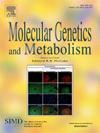埃拉米普肽在治疗巴斯综合征中的作用:目前的证据和一份病例报告
IF 3.5
2区 生物学
Q2 ENDOCRINOLOGY & METABOLISM
引用次数: 0
摘要
Barth综合征是由TAFAZZIN (TAZ)致病性变异引起的一种极其罕见且具有潜在致命性的x连锁线粒体疾病,导致成熟心磷脂合成缺陷及其融入线粒体内膜。可能严重的临床特征包括心肌病、循环中性粒细胞减少症、骨骼肌病和生长迟缓。目前,还没有fda批准的治疗方法。在老年Barth综合征患者的临床前和临床研究中,Elamipretide (ELAM)已被证明可以稳定心磷脂并改善线粒体生物能量学。在这里,我们描述了一个产前确定的Barth综合征相关的严重左心室(LV)非压实性心肌病的病例,其中ELAM在出生后不久因临床心力衰竭而开始,并与显著和持续的临床改善相关,导致心脏移植名单上的不活跃状态,最终预期将被摘牌。现就Barth综合征的病理生理、ELAM的作用机制及其临床应用等方面的文献进行综述。本文章由计算机程序翻译,如有差异,请以英文原文为准。
Elamipretide in the Management of Barth Syndrome: Current Evidence and a Case Report
Barth syndrome is an exceedingly rare and potentially fatal X-linked mitochondrial disease arising from pathogenic variants in TAFAZZIN (TAZ), leading to defects in mature cardiolipin synthesis and its integration into the mitochondrial inner mitochondrial membrane. Clinical features that may be severe include cardiomyopathy, cyclic neutropenia, skeletal myopathy, and growth delay. Currently, no FDA-approved therapies exist. Elamipretide (ELAM) has been shown to stabilize cardiolipin and improve mitochondrial bioenergetics in pre-clinical and clinical studies in older individuals with Barth syndrome. Here we describe a case of prenatally identified Barth syndrome-related severe left ventricle (LV) non-compaction cardiomyopathy, where ELAM was initiated shortly after birth for clinical heart failure and was associated with significant and sustained clinical improvement leading to an inactive status on the heart transplant list with eventual anticipated delisting. We provide a review of the current literature including the pathophysiology of Barth syndrome, the mechanism of action of ELAM, and its clinical applications.
求助全文
通过发布文献求助,成功后即可免费获取论文全文。
去求助
来源期刊

Molecular genetics and metabolism
生物-生化与分子生物学
CiteScore
5.90
自引率
7.90%
发文量
621
审稿时长
34 days
期刊介绍:
Molecular Genetics and Metabolism contributes to the understanding of the metabolic and molecular basis of disease. This peer reviewed journal publishes articles describing investigations that use the tools of biochemical genetics and molecular genetics for studies of normal and disease states in humans and animal models.
 求助内容:
求助内容: 应助结果提醒方式:
应助结果提醒方式:


